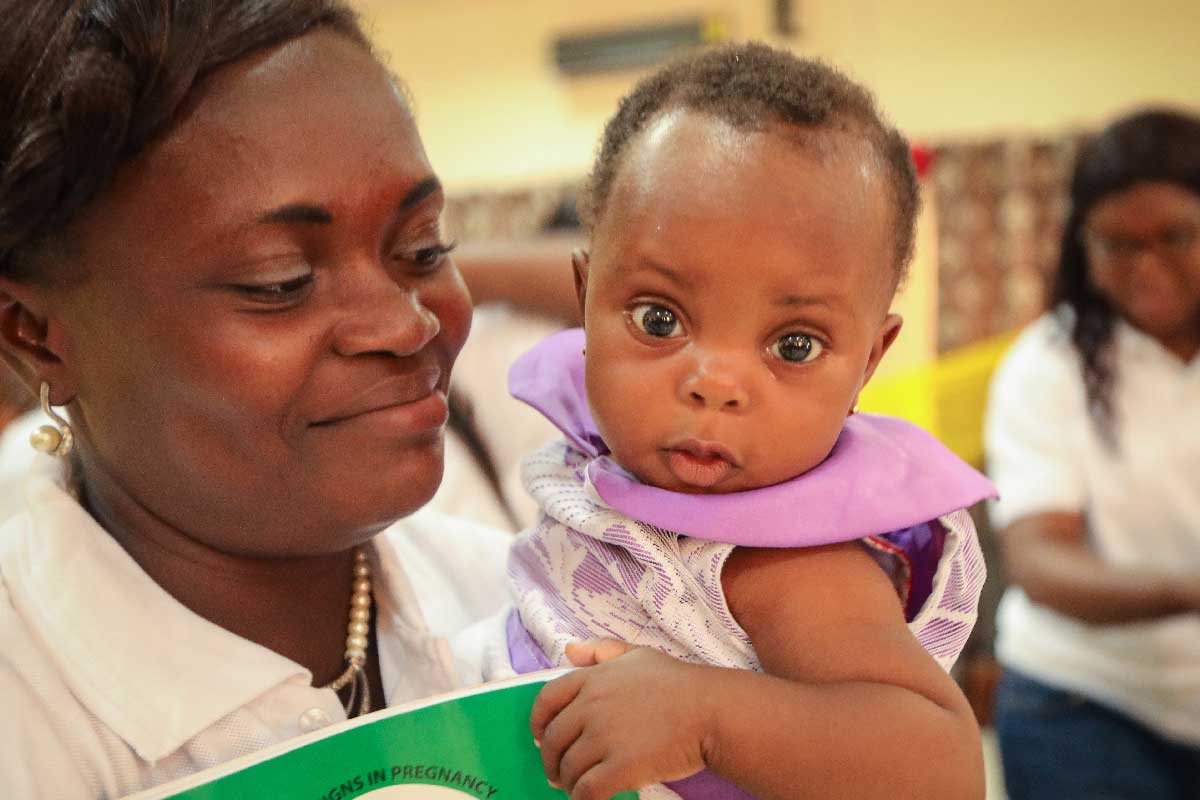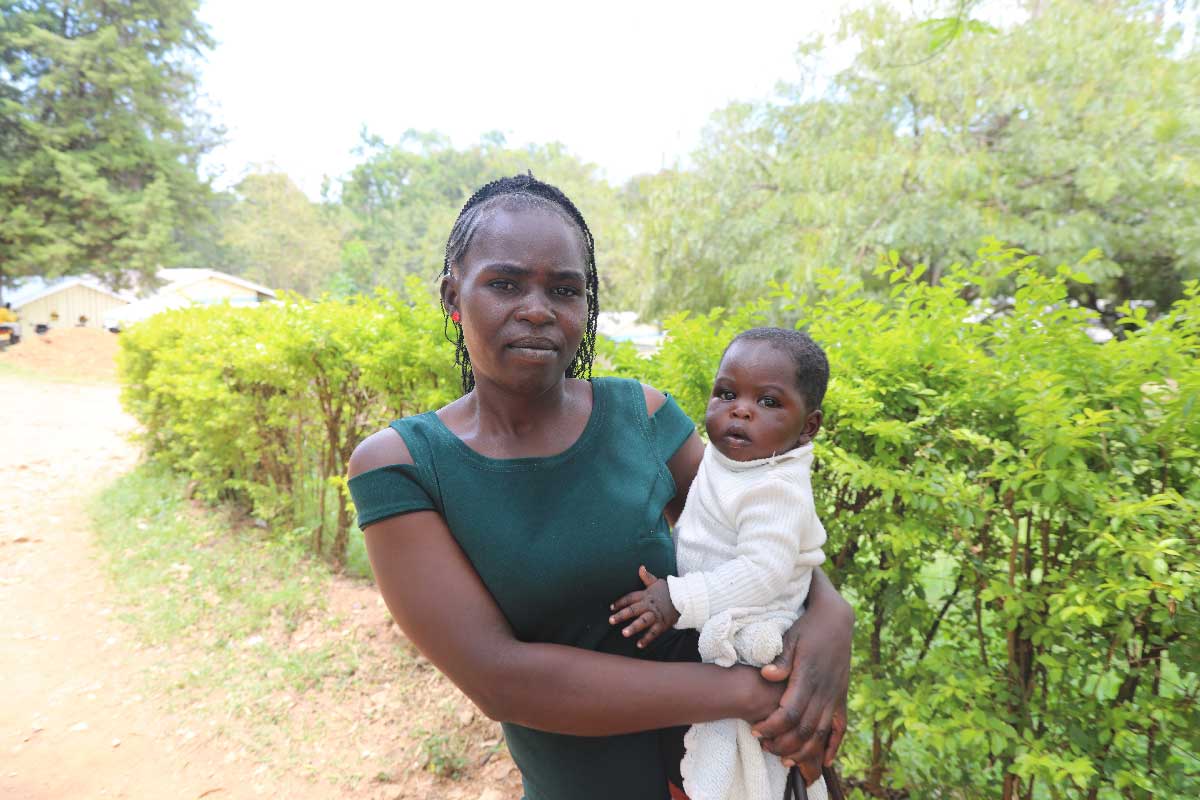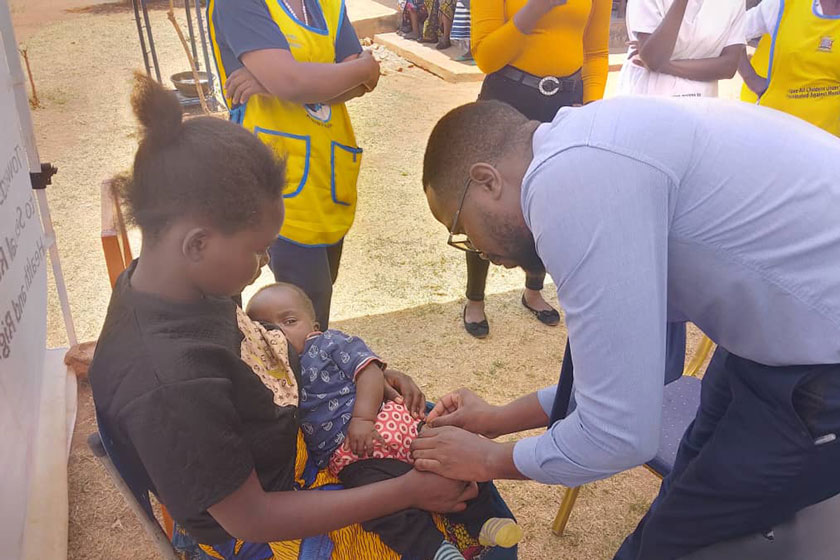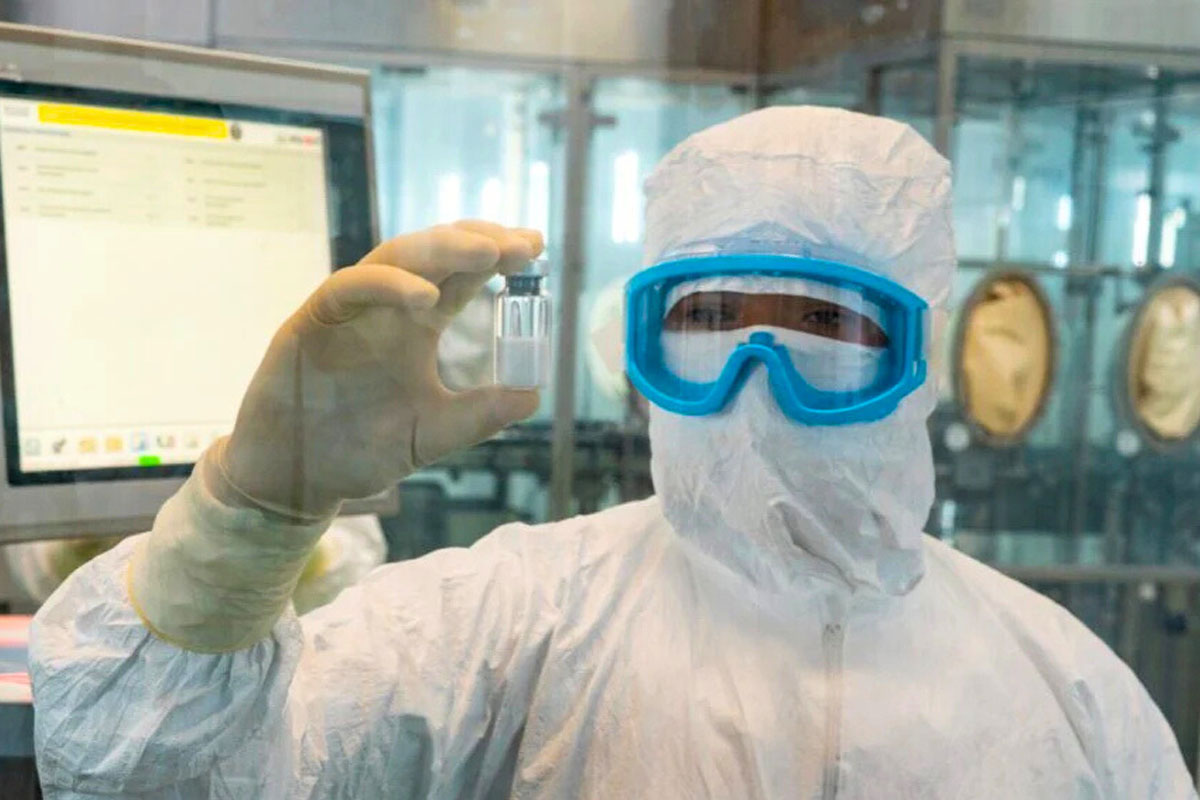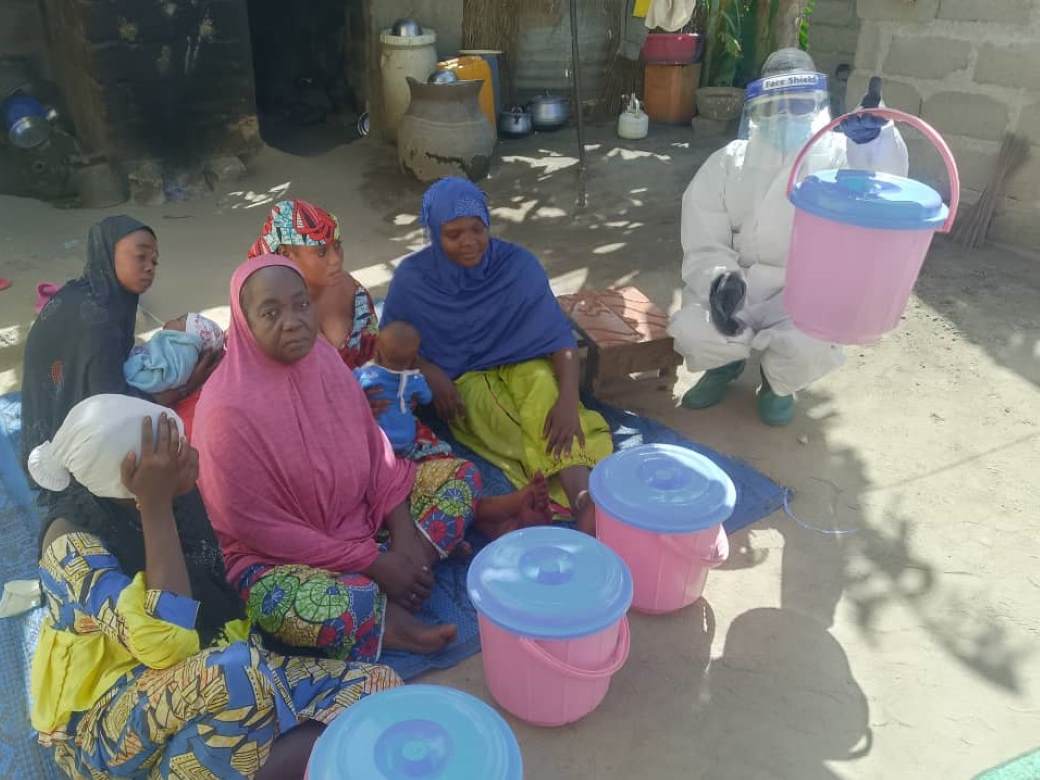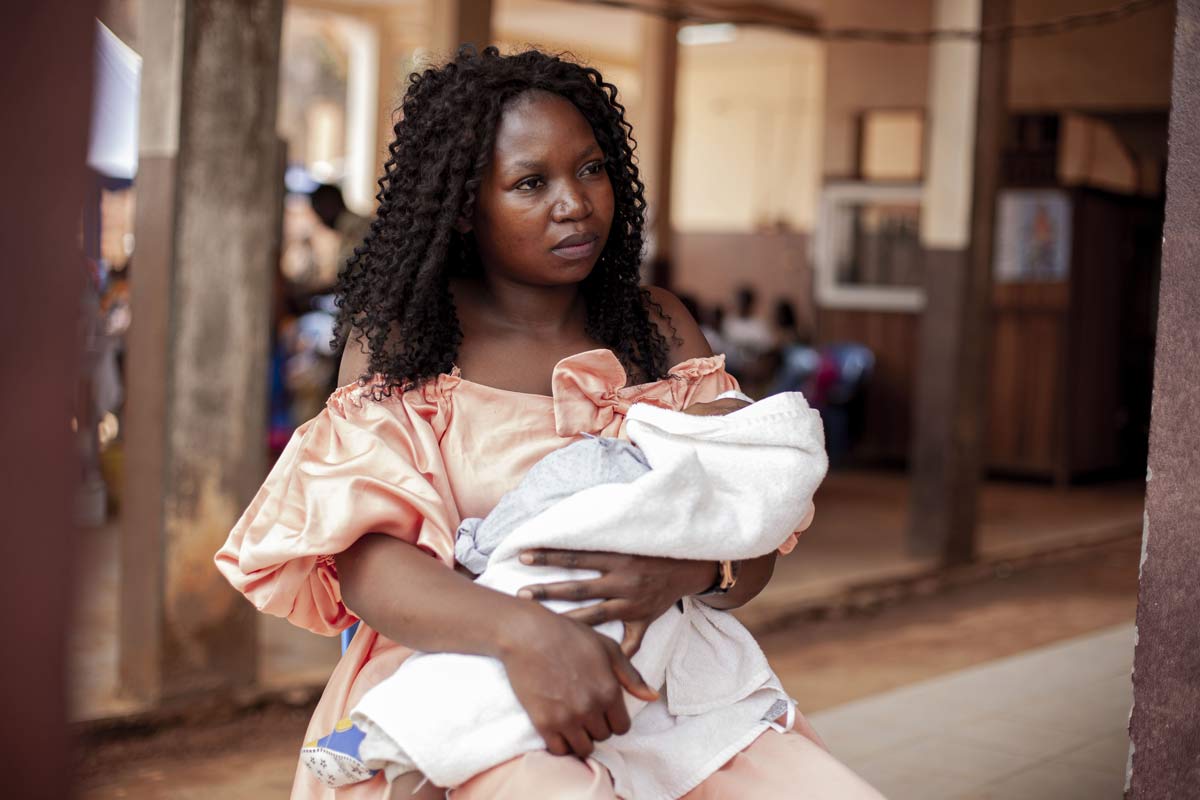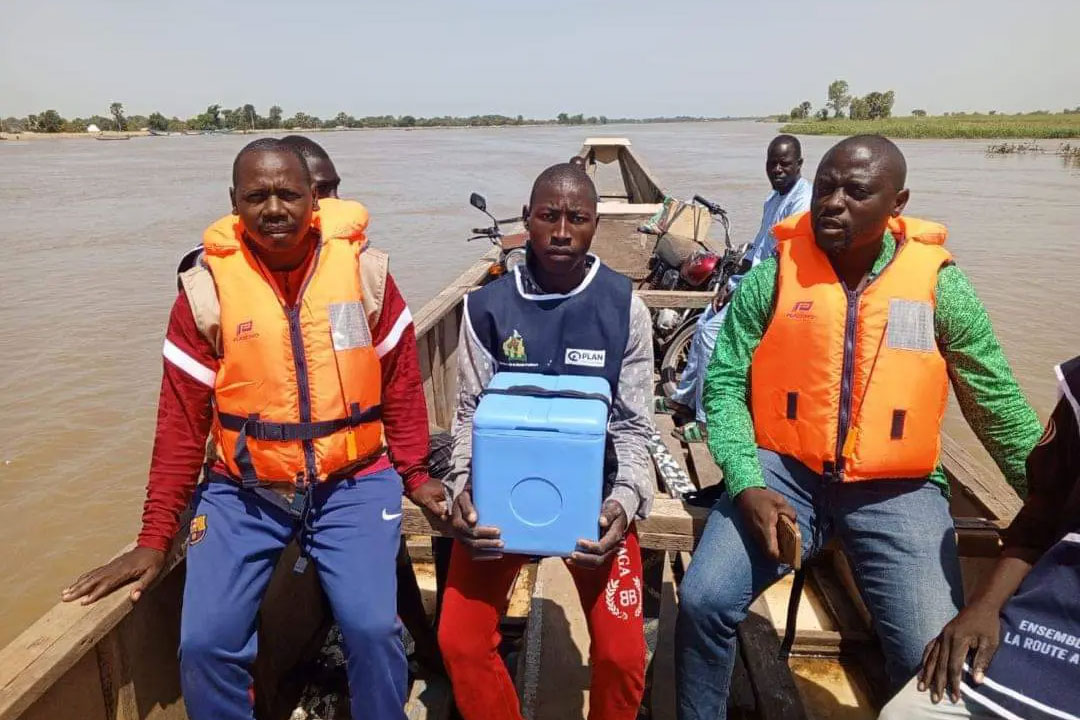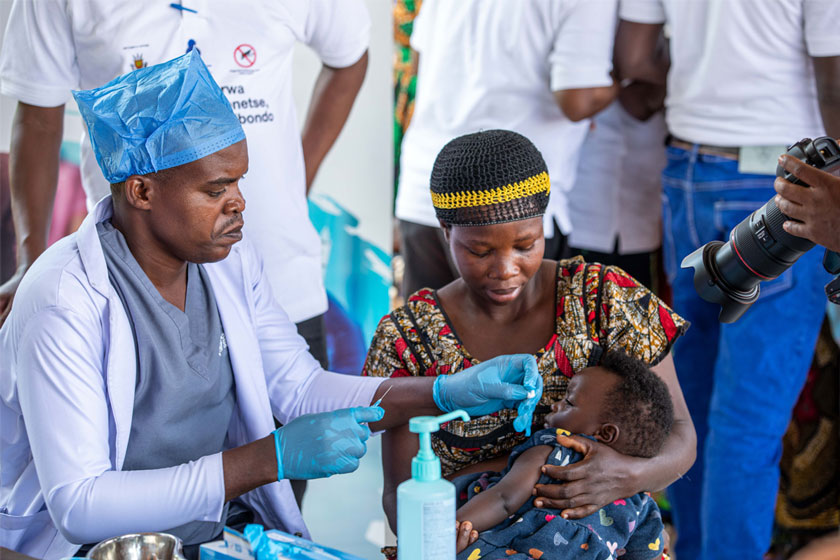In Cameroon, the game of vaccine catch-up is both a sprint and a marathon
Successive catch-up campaigns have made progress at reaching the cohort of ultra-vulnerable, unvaccinated kids that swelled amid Cameroon’s COVID-19 crisis. But health workers say the finish line remains elusive.
- 1 October 2025
- 5 min read
- by Nalova Akua
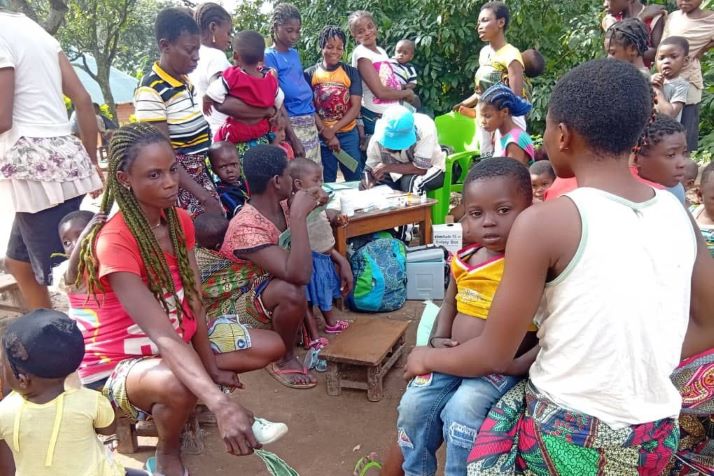
Assiatou Arabo, a 30-year-old housewife living in Gazawa district in Cameroon’s Far North region, was busy with household chores late on the morning of 31 July when she received an unexpected visit: mobile vaccinators.
She says had planned to take her nine-month-old son, Aboubakar Siddiki Abdouramane, to a nearby health centre for routine vaccination, but had not yet found the time. The visitors saved her the trouble.
“My child was vaccinated against measles, polio and malaria. I am very happy because I know he is now protected,” she said. “All three of my children are now up to date with their vaccines. Last year, they suffered from bouts of malaria. I know that polio can paralyse a child, which is why I try to have them vaccinated at all costs.”
A few kilometres away, Seinatou Yaya, a trader and mother of three, did not wait for the teams to come to her. She went to the hospital herself with her 15-month-old daughter, Zouweiryatou, for vaccination. “Measles is deadly. My children had it eight years ago and treatment cost a fortune,” she explained. “Today I am reassured to know that my daughter is protected.”
Their children are among the hundreds of thousands targeted during the fourth phase of the Big Catch-up campaign, held from 31 July to 4 August 2025 across 63 health districts in all ten regions of Cameroon.
Why a “catch-up” campaign?
Like many countries, Cameroon saw vaccination coverage plummet during the COVID-19 pandemic. According to the latest WUENIC estimates in 2024, the country counted 168,226 zero-dose children. To reach those missed, Cameroon launched the Big Catch-up in 2023, a global initiative supported by Gavi and partners.
“This is not a one-off campaign, but a strategy,” stresses Dr Tchokfe Shalom Ndoula, Executive Secretary of the Expanded Programme on Immunization (EPI). “Children are caught up during routine vaccination, polio campaigns, or through periods of intensified routine immunisation. The idea is to find and vaccinate every child, no matter the context.”
Challenges of insecurity and logistics
In remote villages, vaccination teams travel long distances, sometimes by canoe, to reach communities. In cities, they partner with private clinics to reduce the number of children left out. For nomadic populations, vaccination is offered alongside livestock immunisation.
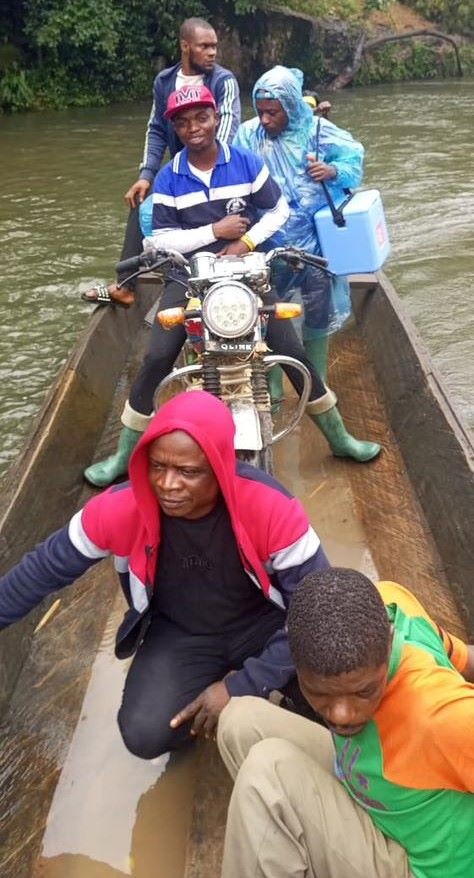
Credit: Pamela Oben
In the South-West, a region grappling with insecurity, EPI coordinator Dr Oben Pamela epse Besong highlights the importance of these tailored approaches. “Since September 2024, four catch-up campaigns have been organised across 15 districts, reaching more than 21,000 zero-dose children and 13,000 under-immunised,” she explains. The campaigns have also made it possible to deliver HPV vaccines and improve malaria coverage in the targeted districts.”
The methods may vary, but the spirit remains the same: bringing vaccination to families. “Every time we come across a zero-dose child, we vaccinate them immediately,” says Dr Shalom.
But the task remains arduous. In the anglophone regions of the North-West and South-West, roiled by conflict since 2016, vaccinating children remains perilous. Teams have been threatened, kidnapped, and in some cases even killed. “Insecurity remains a major challenge,” acknowledges Dr Oben. “We assess the situation before and during each intervention, in coordination with local authorities, to gain access to communities.”
On top of these risks come logistical difficulties: impassable roads, high transport costs, poor internet connectivity, lack of electricity and shortages of staff. In some districts, health workers still rely on bicycles or motorised boats to reach villages.
Have you read?
Progress, but fragile
Since the launch of the initiative in 2023, nearly 120,000 zero-dose children have received their vaccines – almost half of the target set for a 2025. The fourth phase helped to consolidate this progress.
Yet the authorities acknowledge that catching up a zero-dose child is “ten times more difficult” than vaccinating a newborn. The same barriers reappear again and again: parental mistrust, persistent rumours, costs, insecurity and logistical constraints.
“Outbreaks will continue as long as we haven’t reached the coverage levels needed to stop them,” explains Dr Shalom. Already in 2025, 48 districts have reported measles outbreaks, along with cases of polio and yellow fever. Each intervention therefore becomes a double opportunity: to respond to an outbreak and to vaccinate children left behind.
The catch-up is not a one-off operation: it is a marathon. Since its launch in 2023, Cameroon has already organised four successive campaigns. Each one narrows the gap, but none is sufficient on its own to close it entirely.
That is why the authorities insist on the need to repeat the effort, adapt it constantly and ensure sustainable funding. As Dr Michel Oni Djagnikpo, former Secretary General of the National Order of Physicians, sums it up: “We must do everything to ensure that every child, wherever they live, can be reached with vaccination.”
More from Nalova Akua
Recommended for you
